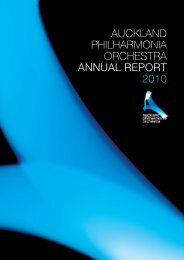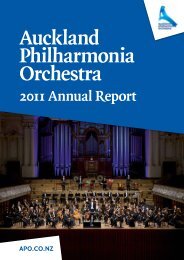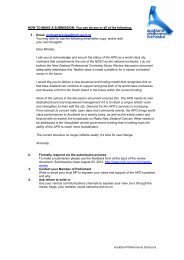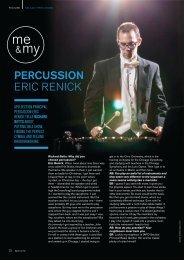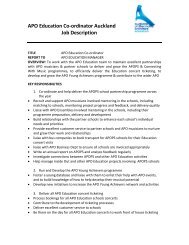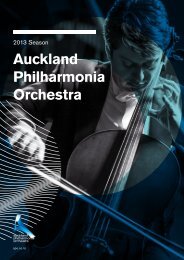Auckland Philharmonia Orchestra - the Auckland Philharmonia
Auckland Philharmonia Orchestra - the Auckland Philharmonia
Auckland Philharmonia Orchestra - the Auckland Philharmonia
Create successful ePaper yourself
Turn your PDF publications into a flip-book with our unique Google optimized e-Paper software.
Costs for <strong>the</strong> NZSO to travel to <strong>Auckland</strong> approx 13 times a year (13 concerts are scheduled in 2012)include plane travel, hotels, per diems, trucking costs, bus costs, in addition to production,advertising, artists and salary costs.With so many areas in New Zealand NOT having <strong>the</strong>ir own professional orchestra, <strong>the</strong> questionneeds to be asked whe<strong>the</strong>r <strong>the</strong> taxpayer dollar is being most effectively used by <strong>the</strong> NZSO coming to<strong>Auckland</strong> as many times as it does, to play repertoire that <strong>the</strong> APO is now able to deliver at a highartistic level.Part Three: Solution pathways and APO learnings for NZ orchestralsector modelAPO has a number of ideas to contribute to some solutions for <strong>the</strong> orchestral sector. We are keen tomeet to discuss <strong>the</strong>se.With an improved structure and greater funding relativity across <strong>the</strong> country, <strong>the</strong> orchestras couldlook for opportunities for collaborative planning. This may include sharing of artists andcollaboration on programme planning in a way that could celebrate <strong>the</strong> unique size and scale of NewZealand. An example might be a festival of music by one composer presented in such a way thatworks appropriate to <strong>the</strong> size of <strong>the</strong> orchestra were performed in each city, forming acomplementary whole that would be greater than <strong>the</strong> sum of <strong>the</strong> parts across <strong>the</strong> country.It is this kind of real‐world, collaborative, cohesive and forward‐looking environment that <strong>the</strong> APOhopes can be achieved through <strong>the</strong> orchestral review for this sector and for New Zealand.ConclusionA glass ceiling has been hit by APO. It cannot proceed to its next step as <strong>the</strong> fulltime symphonyorchestra that <strong>Auckland</strong> demands and wants it to be because it does not have sufficient COREFUNDING of <strong>the</strong> type that normally comes/would be expected to come from central government.At present APO exists on a ratio of 1:1 funding ‐ that is, $1 from Central Government and $1 from<strong>Auckland</strong> Council. The normal ratio for this funding in Australasia is 3:1. As a fulltime city‐basedsymphony orchestra, APO is significantly underfunded by central Government.APO continues to prove that it is a good investment for New Zealand Government orchestralspend. However, APO receives less core funding than any o<strong>the</strong>r comparable fulltime citysymphony orchestra, which limits its ability to develop and to meet current and future demand.In addition, government should consider looking at <strong>the</strong> most efficient and strategic use for <strong>the</strong>national orchestra.APO is excited about its developing role, is poised to take up <strong>the</strong> challenges and opportunities of itsfuture, and looks forward to an improved orchestral environment as a result of this review.Contextualising <strong>Auckland</strong> and <strong>the</strong> NZ orchestral sector <strong>Auckland</strong> <strong>Philharmonia</strong> <strong>Orchestra</strong> Page 15



